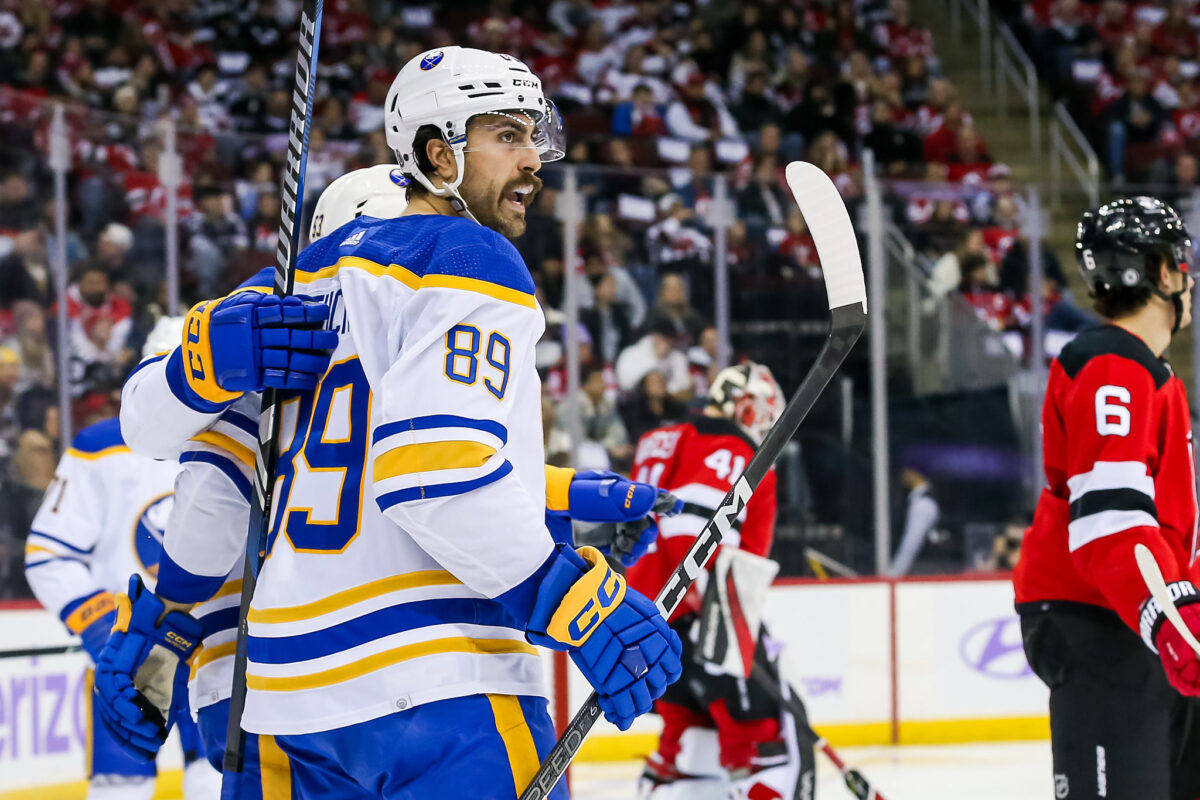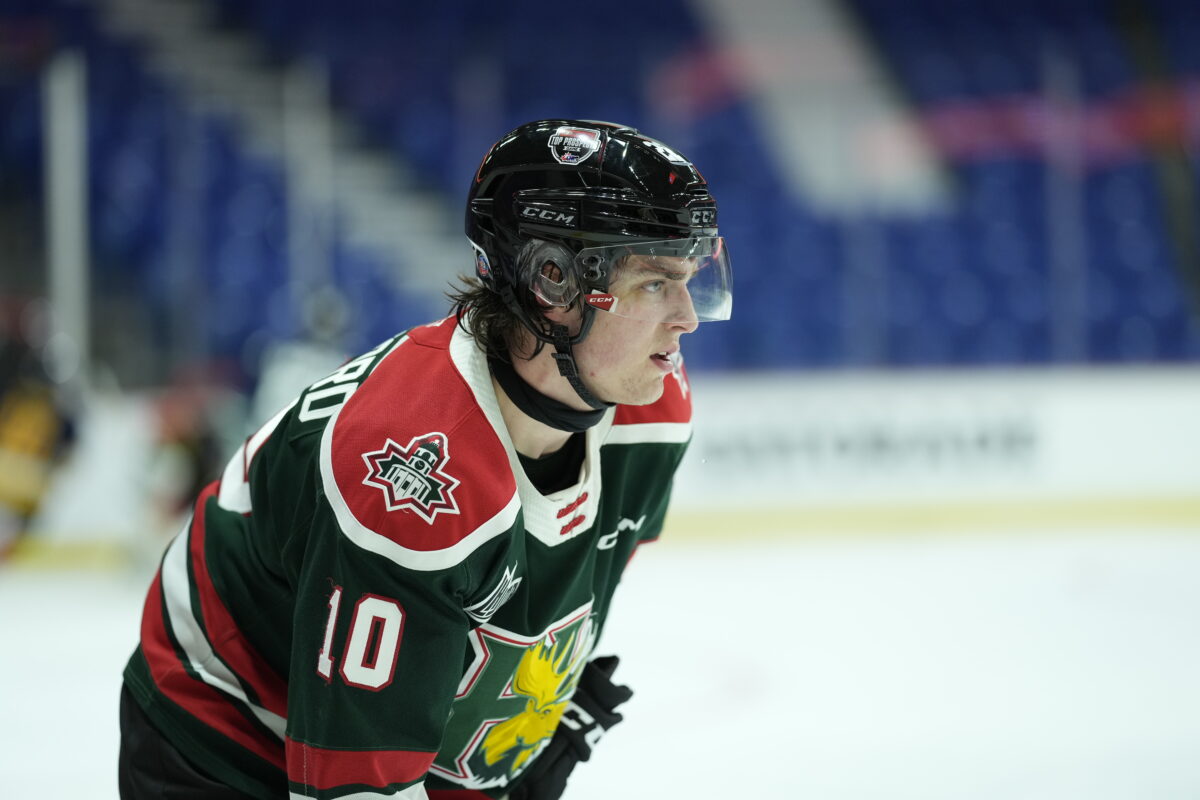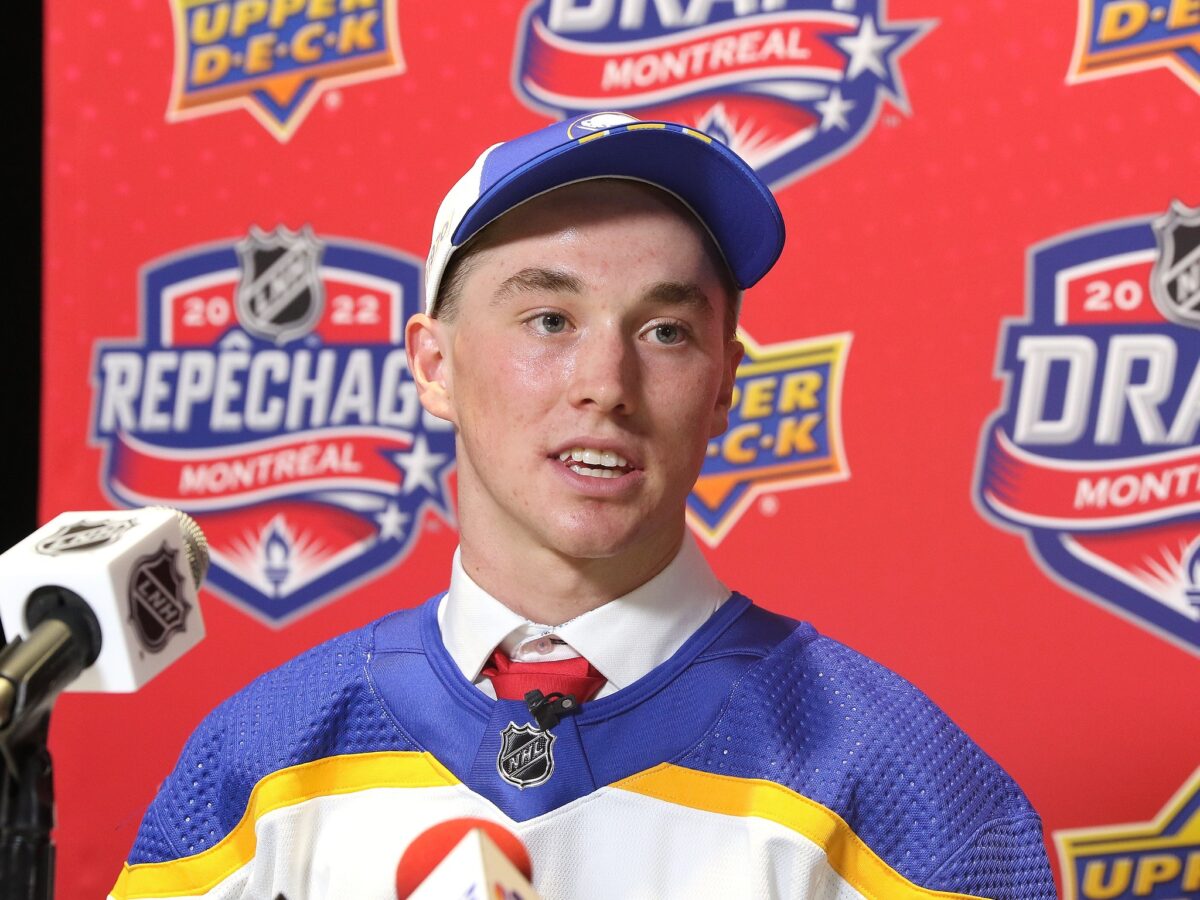It feels like just yesterday that the Buffalo Sabres traded Jack Eichel to the Vegas Golden Knights, but Jan. 13, 2024, marked the 800-day anniversary of the blockbuster deal that shook the hockey world to its core.
Now three seasons removed from Eichel’s last full campaign in Buffalo, the Sabres are struggling to find offense. They rank 23rd in the NHL in goals per game, while the Golden Knights are coming off a Stanley Cup victory, with Eichel playing a pivotal role. One team has been able to score and win consistently since the trade, and the other has not. But do the teams’ respective results tell the real story of how the trade shook out? Did losing Eichel leave the Sabres worse off?

The Trade
The relationship between Eichel and the Sabres became unsalvageable after an ugly dispute over whether or not Eichel was permitted to undergo the surgery he wanted to repair a severe neck injury. The Sabres had no choice but to move him. On Nov. 4, 2021, they made the following trade:
Golden Knights Acquire:
- Jack Eichel
- 2023 third-round pick (Mathieu Cataford)
Sabres Acquire:
- Alex Tuch
- Peyton Krebs
- 2022 first-round pick (Noah Östlund)
- 2023 second-round pick (Riley Heidt)
The NHL Pieces
Since the trade took place, three players from the deal have seen NHL action. Here is how they have stacked up offensively:
| Player | Games Played | Goals | Assists | Points |
| Eichel | 143 | 60 | 75 | 135 |
| Tuch | 160 | 59 | 87 | 146 |
| Krebs | 163 | 19 | 36 | 55 |
When Eichel debuted with the Golden Knights on Feb. 16, 2022, he hadn’t played NHL hockey in over ten months. It took him some time to find his game, but once he did, he became a game-changer for Vegas. Eichel has increased his production rate in each of his first three seasons with the Golden Knights, and he collected 26 points in 22 playoff games during Vegas’ run to the Stanley Cup Final in 2022-23.
Eichel has been good since being traded, but so has Tuch. He is a different style of player than Eichel, but effective in his own way. Tuch has the talent and doggedness to turn forechecking and puck battles into offense. Since the trade, he has produced 0.91 points-per-game (P/G), nearly matching Eichel’s 0.94 P/G. Even more impressive is that he has managed to create more offense over the past three seasons than Eichel at 5v5, relying less on the powerplay. He has 2.65 points-per-60 (P/60) at 5v5 as a member of the Sabres, and Eichel has 2.30 P/60 with Vegas.

What separates Eichel from Tuch is his two-way game. He has had a tremendous impact on the Golden Knights at both ends of the ice. Eichel has given up a far lower rate of shots, goals, expected goals, and scoring chances against than Tuch while on the ice at 5v5.
While there was never much doubt that Eichel would be more of an impact player than Tuch, Peyton Krebs, a young prospect only 20 years old, was another critical piece of the trade for Buffalo. Since joining the Sabres, he has produced offense at a relatively average bottom-six rate, although his scoring has dropped considerably this season. He only has seven points in his first 41 games of 2023-24; he hasn’t developed into as big of an offensive threat as the Sabres had hoped. Since he arrived, they have been outscored 84-62 with Krebs on the ice at 5v5. He is routinely outscored by the opposition, and it’s becoming a concern for the team. He has shown flashes of brilliance, and he’s still young enough to become an effective NHL player, but I’m starting to become less confident that it will be in Buffalo.
The Futures
So far, we’ve looked at the impact of the players from this trade at the NHL level. Eichel has been an elite player for the Golden Knights. Tuch has been a successful top-six player for the Sabres, but Krebs has yet to be effective consistently. In terms of NHL impact, it’s been a win for Vegas, but a few more pieces may change things.
In addition to Tuch and Krebs, the Sabres received a first-round pick. They used that pick to select Swedish centerman Noah Ostlund. He had a fantastic 2022-23 season in the second-tier Swedish league, scoring 26 points in 37 games. This season, he has 10 points in 19 games in the top-tier league, the Swedish Hockey League (SHL). Prior to this season, Daily Faceoff ranked Ostlund as the fifth-best prospect in Buffalo’s deep pool of young talent. Until he transitions to North America, it’s hard to predict how Ostlund will fare compared to the other young players vying for spots on the Sabres’ roster. Still, he appears to be trending in the right direction with his development.
Related: Buffalo Sabres’ Top Ten Prospects for 2023-24
The Golden Knights sent one more piece Buffalo’s way in this deal: a second-round pick in the 2023 NHL Draft. The Sabres elected to package that pick with a fifth-round selection to acquire Jordan Greenway from the Minnesota Wild. I won’t dive too deep into Greenway’s impact in Buffalo since he wasn’t part of the Eichel deal, but it’s worth noting that adding him was made possible through the assets the Sabres acquired in this trade.

The last piece of this deal to look at is the third-round pick in the 2023 Draft that the Sabres sent to the Golden Knights. Halifax Mooseheads center Mathieu Cataford was taken with this pick, and he’s trending toward being a potential steal relative to where he was drafted. While he isn’t as highly regarded by scouts as Ostlund is, he has consistently increased his production in the Quebec Maritimes Junior Hockey League (QMJHL) and currently has 60 points in 40 games in 2023-24. He was ranked as the eighth-best prospect in the Golden Knights system at the start of the season by Daily Faceoff.
Did the Sabres Lose The Eichel Trade?
With the lack of team success over the past few seasons, it’s easy to point to the departure of Eichel and the lack of an equal return of NHL-ready talent as a significant part of what led the Sabres here. While Eichel has undoubtedly turned out to be, as we all expected, the best player in the trade, Tuch has softened the blow considerably. Krebs has failed to meet expectations but is still only 22 years old. Furthermore, Ostlund is still developing; if he can become an adequate NHL regular, the Sabres would be pretty happy with their return on the trade.
Getting a fair return for a superstar player in a trade is difficult, especially when the player wants out. Tuch had a terrific season in 2022-23 for the Sabres, and he was a big part of their electric offense. The team proved they could score without Eichel, and Tuch was a big part of why. This season, the Sabres’ offense has dried up. Both Tuch and Krebs have seen their production drop; however, their decrease in scoring is not a sign that they are failing in Buffalo. It’s part of a teamwide lack of synergy that may require a coaching change or a significant roster shakeup to solve. In other words, Tuch and Krebs’ decreased offense this season isn’t the issue; it’s a symptom.

While this season has given the Sabres more reason to view the Eichel trade pessimistically, Ostlund and Cataford will need a few years before we can confirm how each team did. For now, the Golden Knights are thrilled that the trade helped win them their first Stanley Cup, and the Sabres are still wondering how their players will develop over the next couple of seasons.
